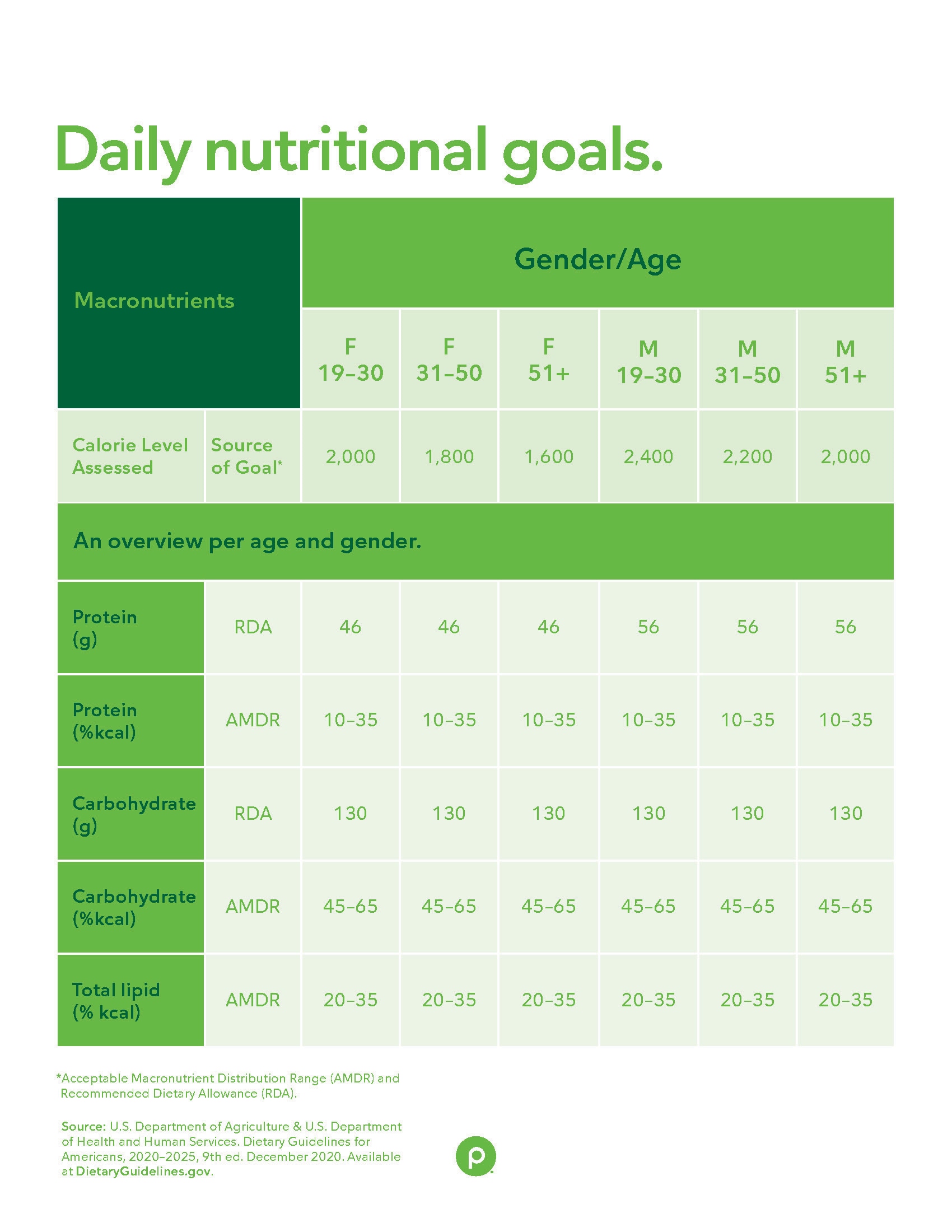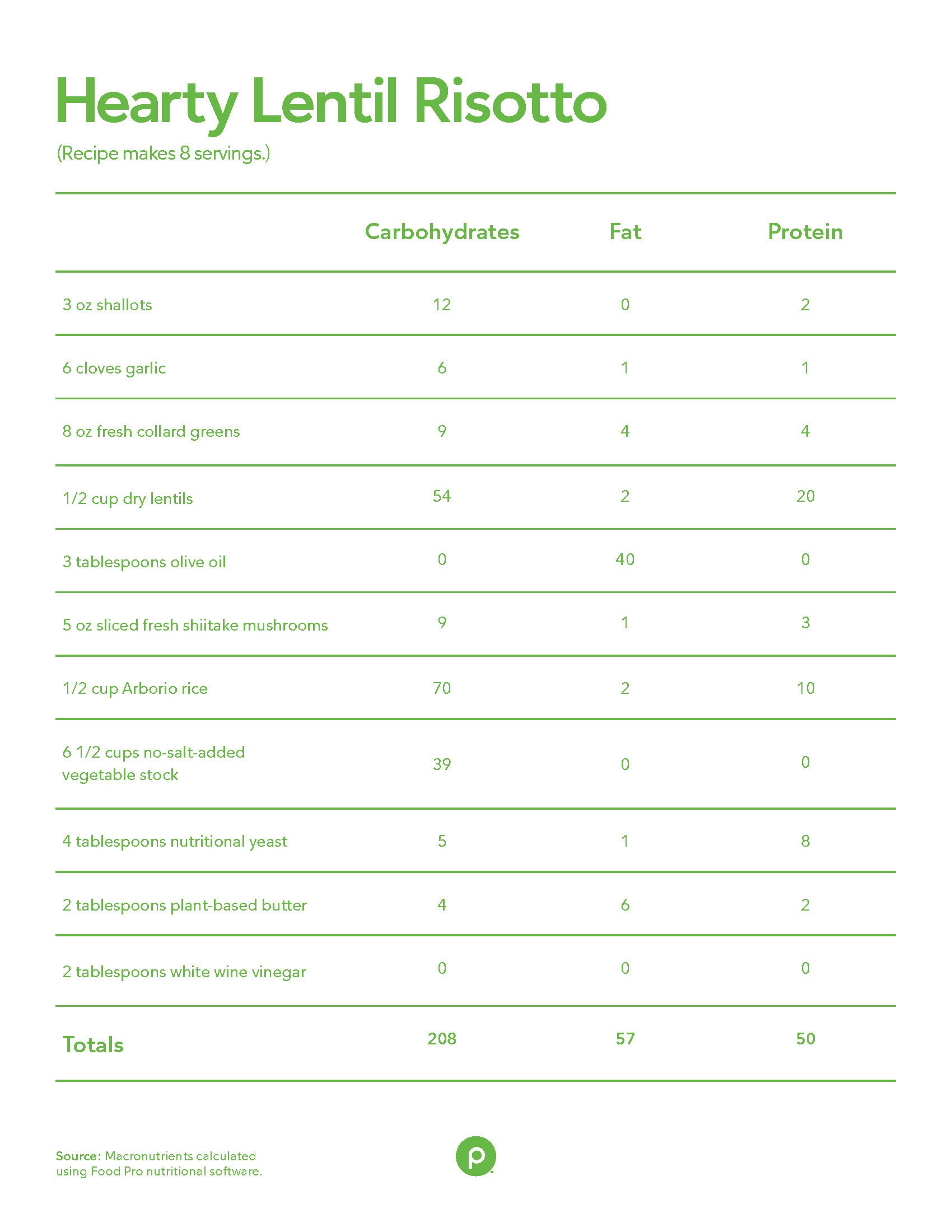Published November 1, 2023
Macro counting is a common diet trend that focuses on eating a set amount of each macronutrient (carbohydrates, protein, and fat) found in foods. While it is especially popular with competitive athletes, it has practical implications and can be part of a healthy diet and lifestyle.1
Recipes.
Staying on track with your nutrition throughout the year can be more difficult during family get-togethers, like summer vacation or holiday gatherings. Many of these events are centered around food and trying to maintain the same eating habits can seem almost impossible. Publix dietitians are here to answer some of the most common questions about your macronutrient intake ("counting macros") so you don't have to miss out on your favorite foods or potluck dishes.
We will discuss some of the most common questions when it comes to one of the most elemental diet styles, the macronutrient diet.

First, what is the macronutrient diet?
The “macro diet”2 involves counting the intake of three macronutrients: proteins, fats, and carbohydrates. First, a person works out their daily calorie needs, then they divide the calories into proportions, such as 10–35% proteins, 20–35% fats, and 45–65% carbs.

Download PDF
If you don’t already have a range you are working with for your personal dietary needs, you can use the standard reference ranges just mentioned. You can also refer to the guide3 from the Dietary Guidelines for Americans. Talk to a dietitian or physician before starting any diet program.
How do I calculate carbohydrates?
There are 4 calories in one gram of carbohydrate. Holiday sources of carbohydrates are items like potatoes, cornbread, stuffing, rolls, etc. For a typical serving of carbohydrates, use the cupped palm of your hand4 as a serving size visual. This typically provides roughly 20–35 grams of carbohydrates.
Holiday Hack: One simple way to watch your carbohydrate intake at the holidays is to drink smart, meaning eat your carbohydrates, don’t drink them. Opt for water or unsweet tea rather than a sugary soda, which often contains around 42 grams of carbohydrates5 in a 12-ounce can.
How do I calculate fats?
One gram of fat has 9 calories. Examples of fats include nuts, butter, oils, mayonnaise, salad dressing, and so on. For a visual reference, use the size of your thumb,4 which provides approximately 15 grams of fat.
Holiday Hack: Bring one of your own modified holiday favorites to the party, using lower-fat swaps. Try replacing sour cream or mayonnaise with a low-fat Greek yogurt, or a broth-based soup rather than one that's cream-based.
How do I calculate protein?
There are 4 calories in one gram of protein. Examples of good protein sources include meats, eggs, beans, and nuts. A typical serving size of protein foods is roughly the size of a deck of cards; it would equal 3 ounces and provide about 21 grams6 of protein.
Holiday Hack: Protein is more satiating than carbohydrates or fats,7 so make sure to prioritize them (without overdoing it) when building your holiday plate.
What if the food does not fall under one specific macro or is a combination?
Sometimes foods are not as simple to break down and classify simply into a category as a protein, carb, or fat. This is often the case with foods like casseroles or other mixed dishes. For these, you can try to mentally separate out the ingredients and use the visuals listed above, but it is sometimes simpler to know the recipe and determine the breakdown in that way.
Let’s look at a mock-up recipe for an example. Measurements below are approximations.

The above example would provide the breakdown for the recipe as a whole. When you divide each of those totals for the macronutrients by the number of servings, you will find that one serving of this side dish has an approximate macronutrient breakdown of 26 grams carbohydrates, 7 grams of fat, and 6 grams of protein. This does not have to be a manual process, however, as there are many great resources and apps that allow you to input your own personalized recipe and see that macronutrient breakdown.
For the complete recipe mentioned in the example above, check out our Hearty Lentil Risotto. You can also check out our Heart Smart Roasted Pork with Bean and Vegetable Salad for a delicious meal your body will thank you for. We make it easy to track your macro intake by providing the recipe breakdown per serving at the bottom of our recipe pages on the website. You can also browse all of our recipes.
There are times of the year that are filled with extra family and enjoyment; health tends to take a back seat for many. If you do choose to keep health goals in mind, you can use these references to help guide your decisions. If precision is the name of the game for you, the potlucks and family gatherings are the perfect time to ask Aunt Irma for that casserole recipe so you can input it into your favorite tracking app. If you prefer a more relaxed approach, try eyeballing the macros. If holidays or vacations mean that some health goals are put on pause for the season, give yourself that grace. Do what works for you and your health journey in this and every season.
For the love of you.
Choosing how you eat is uniquely personal. It’s about your needs, your preferences, and your goals. As your wellness ally, we’re in your corner with fresh ideas, recipes, and wellness icons that make it easier to shift toward wiser food choices. It’s all about you, at your very best.
Sources
1Amidor, Toby. Ask the Expert: Keeping Up with Fad Diets. Today's Dietitian. January 2018.
2What Is a Macro Diet, and How Does It Work? Medical News Today. March 29, 2023.
3U.S. Department of Agriculture & U.S. Department of Health and Human Services. Dietary Guidelines for Americans, 2020–2025, 9th ed. December 2020. Available at DietaryGuidelines.gov.
4Estimate Portion Sizes Using Your Hand. Southern Illinois University Edwardsville. Accessed October 27, 2023.
5Carbohydrates and Sugar. Nemours KidsHealth. January 2017.
6Protein Content of Common Foods. Johns Hopkins Medicine. June 2019.
7Paddon-Jones, Douglas, Eric Westman, and Richard D. Mattes et al. Protein, Weight Management, and Satiety. ScienceDirect. May 2008.

 You are about to leave publix.com and enter the Instacart site that they operate and control. Publix’s delivery and curbside pickup item prices are higher than item prices in physical store locations. Prices are based on data collected in store and are subject to delays and errors. Fees, tips & taxes may apply. Subject to terms & availability. Publix Liquors orders cannot be combined with grocery delivery. Drink Responsibly. Be 21. For prescription delivery, log in to your pharmacy account by using the Publix Pharmacy app or visiting
You are about to leave publix.com and enter the Instacart site that they operate and control. Publix’s delivery and curbside pickup item prices are higher than item prices in physical store locations. Prices are based on data collected in store and are subject to delays and errors. Fees, tips & taxes may apply. Subject to terms & availability. Publix Liquors orders cannot be combined with grocery delivery. Drink Responsibly. Be 21. For prescription delivery, log in to your pharmacy account by using the Publix Pharmacy app or visiting 
